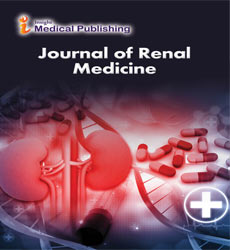Cerebrospinal fluid based on the therapeutic response in primary Renal Medicine
Abstract
We evaluated the cerebrospinal fluid (CSF) levels of the B-cell activating factor of the tumor necrosis factor family (BAFF) and A proliferation-inducing ligand (APRIL) in two cases of primary central nervous system B-cell lymphoma (PCNSBL) before and after treatment. One patient achieved clinical remission, and demonstrated decrease in the CSF levels of both BAFF and APRIL after treatment. Meanwhile, the other patient with insufficient therapeutic response showed increase in the BAFF levels despite decrease in APRIL levels. This report suggests that the combination of BAFF and APRIL levels could be useful in estimating the therapeutic efficacy in treating PCNSBL as reliable CSF markers. Mice were transcardially perfused with saline followed by 4% paraformaldehyde (PFA). Brain, heart, liver, pancreas, kidney, skeletal muscle, and testes were post-fixed in 4% PFA overnight followed by 30% sucrose for 48 h. Adipose tissues, adrenal glands, and pituitary glands were flash frozen in embedding media immediately following dissection. Coronal brain sections (40 μm) were collected using a cryostat (Leica) and all other tissues were sectioned (10 μm) utilizing a cryostat with cryo-jane system (Leica). For NeuN staining, free-floating brain sections from UCP1-Cre; Ai14-tdTomato mice were incubated with blocking solution (5% normal goat serum) for 1 h at room temperature (RT), followed by primary antibody (Abcam, ab104225) overnight at 4 °C. The following day, sections were incubated in goat anti-rabbit 488 secondary antibody (Life Technologies) for 1 h at RT and mounted onto slides. All tissue sections were mounted with VECTASHIELD antifade mounting media with DAPI (Vector Laboratories) and imaged using an Olympus BX61 Light Microscope.
Open Access Journals
- Aquaculture & Veterinary Science
- Chemistry & Chemical Sciences
- Clinical Sciences
- Engineering
- General Science
- Genetics & Molecular Biology
- Health Care & Nursing
- Immunology & Microbiology
- Materials Science
- Mathematics & Physics
- Medical Sciences
- Neurology & Psychiatry
- Oncology & Cancer Science
- Pharmaceutical Sciences
